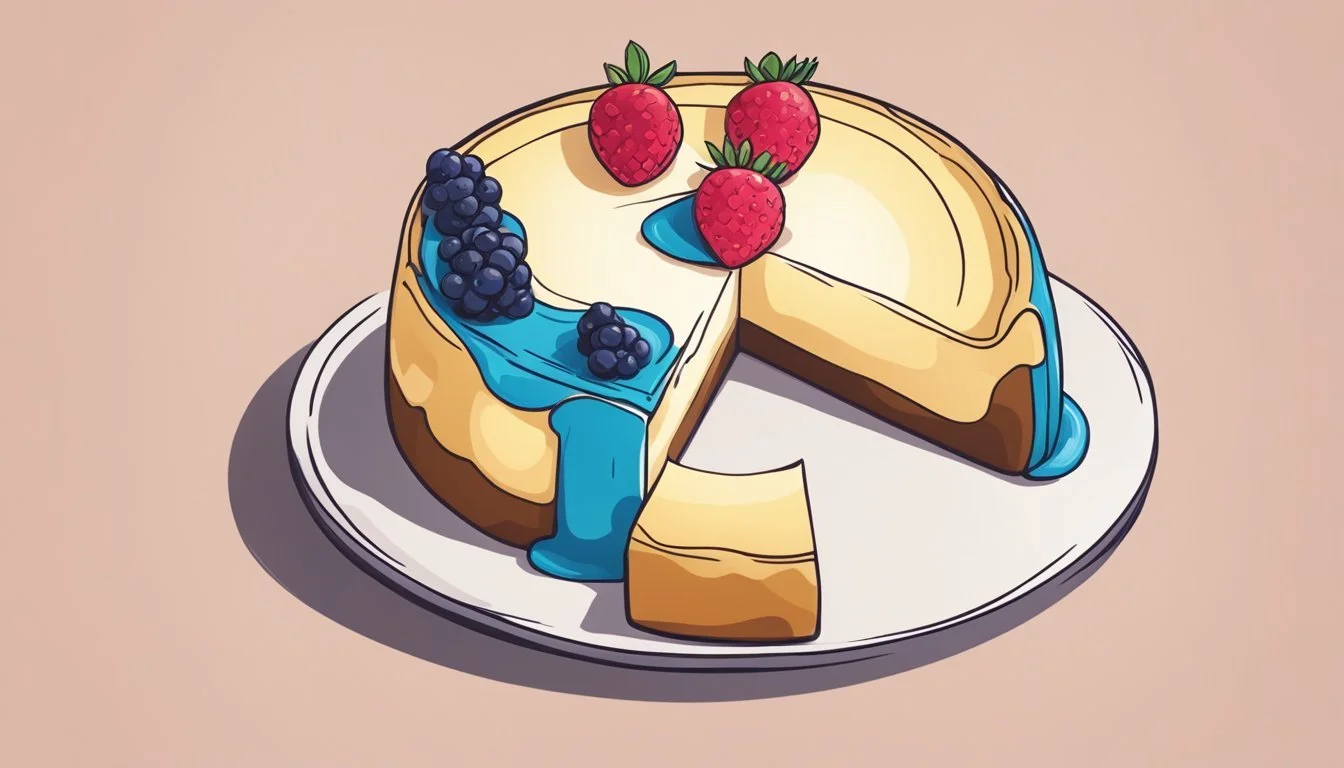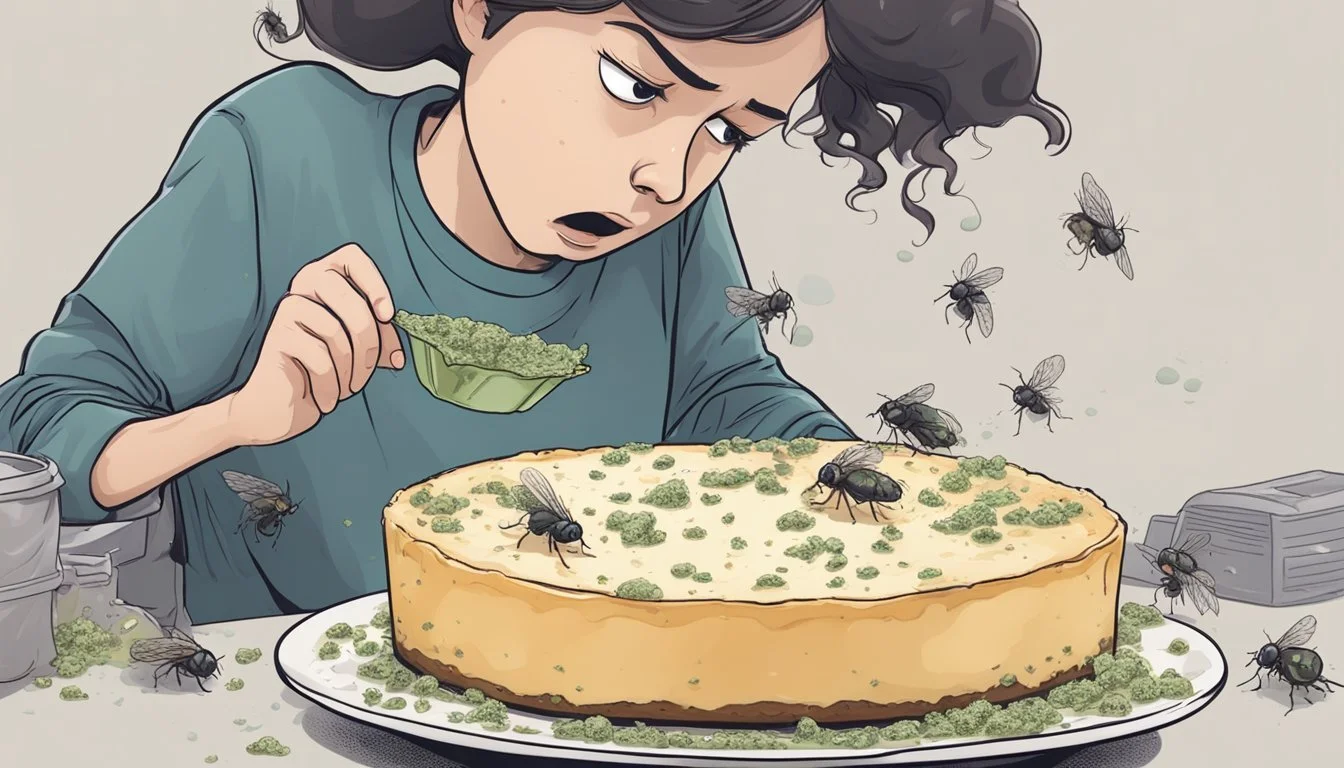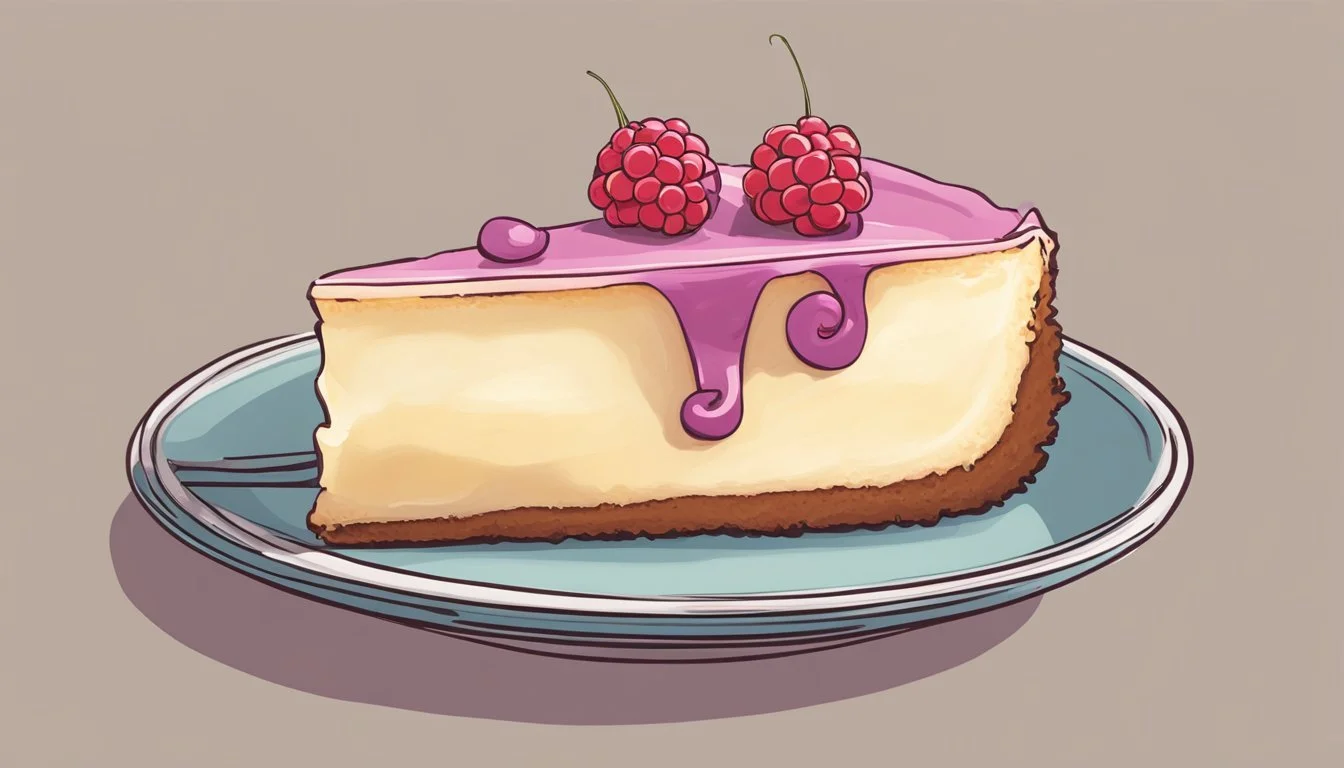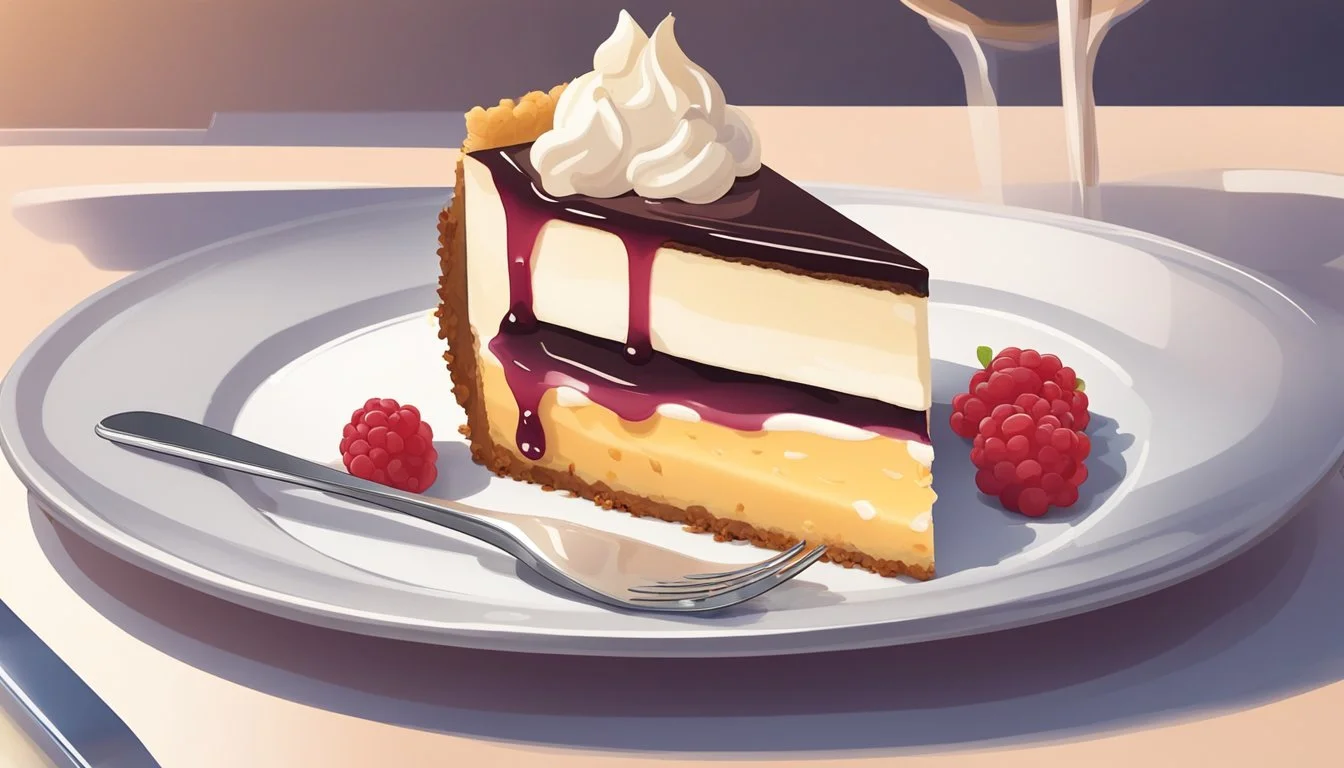Does Cheesecake Go Bad?
Understanding Shelf Life and Spoilage Signs
Cheesecake, a beloved dessert known for its smooth, creamy texture and rich flavor, has a shelf life that consumers should be aware of. Like most food items, particularly those made with dairy products, cheesecake does indeed go bad. The freshness and safety of cheesecake can be compromised over time, leading to potential food spoilage. Recognizing the signs of a spoiled cheesecake is crucial to prevent foodborne illness, and understanding proper storage is key to maintaining its quality.
To extend the longevity of cheesecake, it should be stored in the refrigerator, where it can remain good for approximately 5 to 7 days. If long-term preservation is needed, freezing is an option, allowing the cheesecake to last for about 8 months. Identifying when cheesecake has gone bad involves looking for indicators such as an off smell, an unpleasant taste, the presence of mold, discoloration, or a change in texture, like the edges turning brown or the crust becoming soggy. When any of these signs are noticed, the cheesecake should not be consumed.
Understanding the Basics of Cheesecake
Cheesecake is a beloved dessert that requires attention to ingredients, baking techniques, and storage for both homemade and store-bought varieties. Recognizing freshness and preventing spoilage are integral to its enjoyment.
Definition and Varieties
Cheesecake is a rich and creamy dessert composed of one or more layers. The main layer consists of a mixture of soft, fresh cheese—typically cream cheese or ricotta—eggs, and sugar. Varieties range from New York-style cheesecake, which is dense and rich, to lighter versions like those made with ricotta.
Common Ingredients
A classic cheesecake batter includes cream cheese (What wine goes well with cheese?), eggs, sugar, and often sour cream to add richness. Flavorings such as lemon, vanilla, or fruit purees may be incorporated. The crust is usually made from crushed graham crackers, butter, and sugar.
The Role of Dairy Products
Dairy products, especially cream cheese, are foundational in providing the characteristic texture and taste of cheesecake. They contribute to the smoothness, but also to the perishability of the dessert.
Baking Fundamentals
Proper baking techniques are crucial for the perfect cheesecake texture. A water bath can evenly distribute heat and help manage temperature shifts in the oven, preventing cracks.
Freshness Indicators
A fresh cheesecake will have a smooth texture with no signs of mold or discoloration. Odor is another indicator; a spoiling cheesecake may emit an unpleasant smell.
Cheesecake Shelf Life
The shelf life of a homemade cheesecake is generally shorter than that of a store-bought cheesecake, which may contain preservatives. Typically, cheesecake can last in the fridge for up to 5 days.
Perishability of Cheesecake
Cheesecakes are highly perishable due to their dairy content and moisture. They are prone to food spoilage and foodborne illness, including bacteria like salmonella if not handled properly.
Cheesecake as a Dessert
As a dessert, cheesecake is versatile, often served with a variety of toppings such as fruit sauces, whipped cream, or fresh fruit. It's a popular menu item in many bakeries and restaurants.
Packaging and Labelling Standards
Store-bought cheesecake often comes with labeling that includes ingredients, storage instructions, and a "use by" or "best before" date to ensure food safety.
Storage Practices Overview
The best way to store cheesecake is by keeping it refrigerated, covered, and away from strong-smelling foods. The USDA recommends a fridge temperature between 34°F and 40°F for optimal storage.
Health Considerations
When enjoying cheesecake, one should be mindful of its rich ingredient list, which results in a high-calorie dessert. Always check for signs of spoilage, like mold or off odor, before consumption to avoid food poisoning.
Proper Cheesecake Storage Techniques
The key to preserving the quality and safety of cheesecake lies in optimal storage conditions whether in a refrigerator or freezer, paying close attention to duration and protective measures against spoilage.
Refrigeration Guidelines
When storing cheesecake in the refrigerator, it should be kept at a steady temperature between 34°F to 40°F. Encase the cheesecake in plastic wrap or aluminum foil, or place it in an airtight container to protect from fridge odors and prevent dryness. Store-bought cheesecake often comes with specific instructions, which should be followed closely.
Freezing Cheesecake
Cheesecake can be frozen to extend its shelf life. To freeze cheesecake, wrap it tightly in plastic wrap, followed by aluminum foil or place it inside a freezer bag to guard against freezer burn. To thaw frozen cheesecake, one should transfer it to the refrigerator a day before it is to be served, allowing it to thaw slowly.
Considering Storage Duration
Fresh cheesecake should be consumed within 5-7 days when refrigerated to maintain freshness. If frozen, a cheesecake's shelf life can extend to several months; however, tasting for quality before serving is recommended to ensure the flavor has not been compromised over time.
Preventing Spoilage and Contamination
Cheesecakes are prone to spoilage due to their dairy content. Signs of spoilage include discoloration, mold, and off odors. Thoroughly check the cheesecake for these signs before consumption to ensure food safety.
Extending Shelf Life with Proper Techniques
Proper techniques for extending the shelf life of cheesecake include hermetic sealing to prevent exposure to air and contaminants, and storing it away from foods with strong odors to avoid flavor tainting. By adhering to these techniques, the best way to store cheesecake is ensured, prolonging its freshness and taste.
Identifying and Handling Spoiled Cheesecake
Being able to identify a spoiled cheesecake is crucial to avoid the risk of foodborne illness. This section provides specific guidance on spotting spoilage and the steps to take once a cheesecake has gone bad.
Visual Signs of Spoilage
A cheesecake that's past its prime often exhibits visual cues. Mold growth, typically green, black, or white spots, is a clear indication. Also, discoloration, such as brown edges or an off color in the filling, suggests spoilage.
Olfactory Indicators of Freshness
A fresh cheesecake should have a creamy, slightly tangy smell. The presence of unpleasant odors—sourness or other fridge odors—is a reliable sign that a cheesecake has gone bad and may be harboring harmful bacteria or molds.
Tasting for Quality
Tasting is not recommended as a method for identifying spoilage due to the risk of food poisoning. Even a small amount of a contaminated product can cause sickness.
Food Safety Protocols
Cheesecakes should be stored in the fridge and kept at a steady temperature between 34°F to 40°F (1°C to 4°C) to slow down spoilage. Discard any cheesecake that shows signs of spoilage or has been left out at room temperature for over two hours.
What to Do with Spoiled Cheesecake
If spoilage is suspected or confirmed through visual and olfactory indicators, the cheesecake should be discarded immediately to prevent any risk of foodborne illness. Do not taste or offer it to others. Wrap it securely to prevent the spread of any potential contaminants to other food items and dispose of it in the trash.
Special Considerations for Homemade and Store-Bought Cheesecake
When storing cheesecakes, whether homemade or purchased from a store, it is important to consider factors such as storage environment, ingredient stability, and preparation differences that can affect shelf life and quality.
Differences in Storage Needs
Homemade cheesecakes typically lack the preservatives found in store-bought versions, necessitating proper storage in the refrigerator within two hours of baking to maintain freshness. Store-bought cheesecakes, on the other hand, may have a longer shelf life due to preservatives but must still be stored at a steady temperature, ideally between 34°F and 40°F.
Homemade: Refrigerate promptly after baking.
Store-Bought: Follow the provided storage guidelines.
Impact of Toppings and Filling Variations
Both homemade and store-bought cheesecakes can have a variety of toppings and fillings, such as fruit, chocolate, or caramel. These additions may introduce moisture, which can potentially shorten the shelf life and alter the storage requirements to prevent spoilage.
Fruit Toppings: More prone to spoiling, affecting shelf life.
Chocolate/Caramel: Generally less perishable.
Handling Pre-Sliced Cheesecake
Pre-sliced cheesecake should be stored in an airtight container to prevent it from drying out and absorbing odors from the refrigerator. It is crucial to minimize exposure to air to ensure that each slice retains its texture and flavor.
Pre-Sliced: Store in airtight conditions to maintain freshness.
Freezer Storage for Longevity
Freezing is a practical option for extending the life of both homemade and store-bought cheesecake. Wrap the cheesecake securely to prevent freezer burn and store it in the freezer for up to 8 months. Thawing must be done in the refrigerator and can take several hours.
Freezing: Can extend shelf life up to 8 months.
Thawing: Thaw in the refrigerator, not at room temperature.
Common Questions About Cheesecake Storage
Proper storage of cheesecake is critical to maintaining its quality and safety. This section addresses common concerns regarding the freezing, thawing, refrigeration, and handling of leftover cheesecake.
Can You Freeze All Types of Cheesecake?
Not all cheesecakes freeze well. No-bake cheesecakes tend to degrade in texture when frozen and are best enjoyed fresh. Conversely, baked cheesecakes can be frozen and generally retain their quality. To freeze cheesecake:
Wrap it tightly: Use plastic wrap followed by aluminum foil.
Label: Include the date of freezing on the packaging.
Use: Ideally within 8 months to ensure quality.
How to Properly Thaw Frozen Cheesecake
To thaw frozen cheesecake, one should follow these steps:
Refrigerator Thawing: Place the cheesecake in the refrigerator and let it thaw slowly, generally taking several hours or overnight.
Avoid Room Temperature: Do not thaw cheesecake on the countertop, as this can lead to bacterial growth.
Optimal Temperature for Cheesecake Storage
The refrigerator should be set to 34°F to 40°F (1°C to 4°C) to keep cheesecake fresh. Consistency in temperature is key to preventing spoilage and maintaining flavor. Cheesecake should be placed on a shelf in the refrigerator, away from the door, to avoid temperature fluctuations.
Dealing with Leftover Cheesecake
Leftover cheesecake should be handled with care to extend its shelf-life:
Refrigeration: Keep it refrigerated and consume within 5 to 7 days.
Airtight Storage: Store in an airtight container or wrap tightly in plastic wrap.
Appearance: Check for any signs of spoilage, such as discoloration or mold, before consumption.
Summary
Cheesecake, like any perishable food, can go bad. Proper storage is critical to extending its shelf life and ensuring food safety. Typically, cheesecake remains safe to consume for 5 to 7 days when refrigerated at a steady temperature between 34°F to 40°F (1°C to 4°C). Beyond this period, signs of spoilage such as an unpleasant odor, changed texture, mold growth, or discoloration can occur, indicating that the cheesecake should not be consumed.
For longer storage durations, freezing is an option. Cheesecake can be frozen for approximately 8 months, though it is best used within one month to maintain texture quality. When freezing, one must ensure that the cheesecake is wrapped securely to prevent freezer burn and absorption of odors.
Leaving cheesecake at room temperature is highly discouraged as it increases the risk of bacterial growth. Cheesecake should only be left out for no more than 2 hours. Always store cheesecake wrapped up or in an airtight container, whether in the refrigerator or freezer, to retain its freshness and prevent contamination.
Storage Condition Duration Room Temperature Up to 2 hours Refrigerated 5 to 7 days Frozen Up to 8 months
In conclusion, cheesecake can go bad and diligence in storage is paramount. One should always be attentive to any indications of spoilage before consumption to avert potential food-borne illness.








